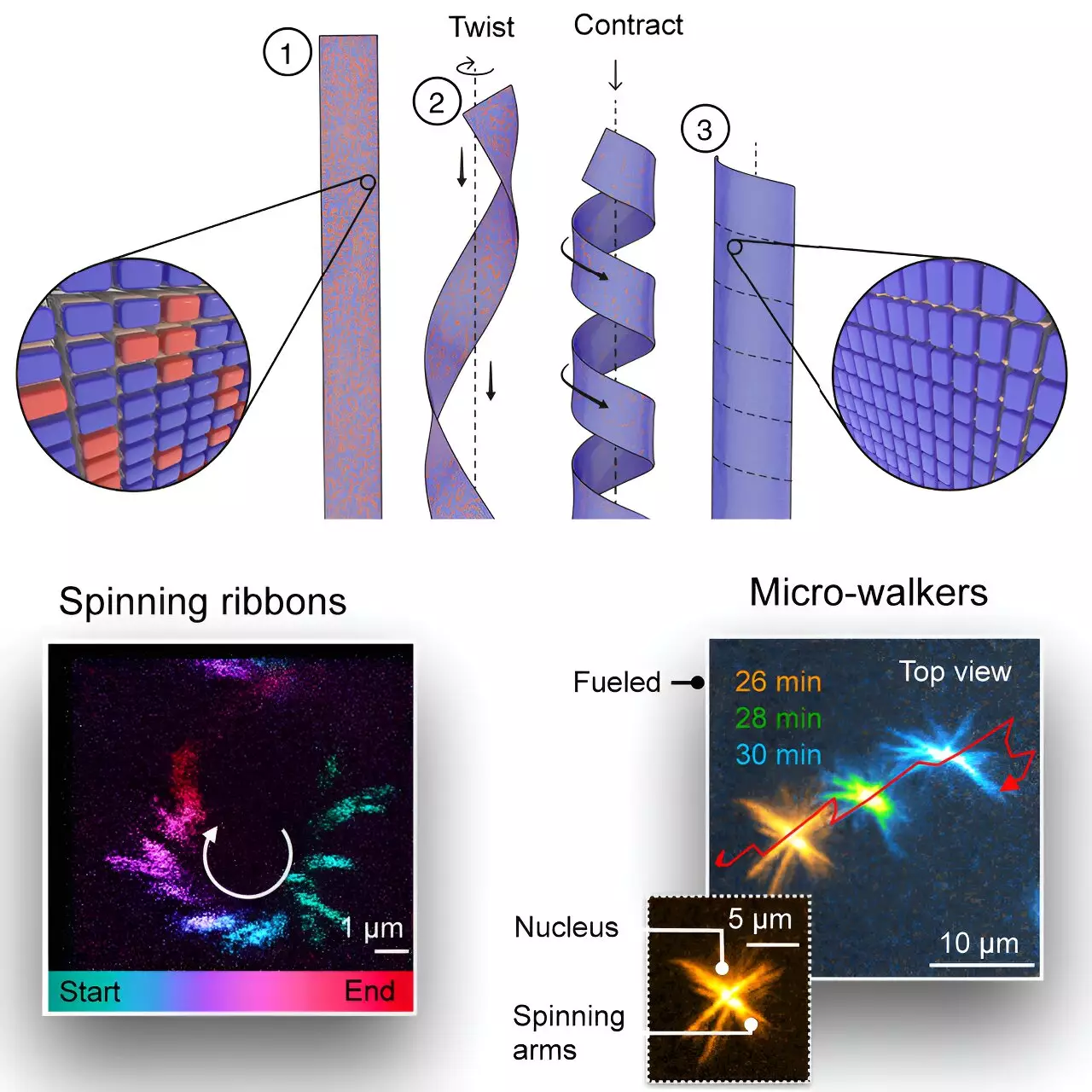Recent advancements in nanotechnology bear the hallmark of revolutionary prospects, particularly in the form of newly developed artificial motors at the supramolecular level. Researchers at the Technical University of Munich (TUM) have created a wind-up motor that showcases astounding power through an intricate system of molecular interactions. This innovation employs a small ribbon constructed from specialized molecules that aligns and moves akin to a fin when energy is introduced, opening doors to a variety of applications, especially in the medical field.
At the core of this innovation lies a method to harness chemical energy—a feat that has thus far been primarily observed in biological systems. The motor mimics the flagella of certain primitive bacteria known as archaea, which utilize ATP as their fuel source to achieve movement. The TUM researchers, led by the teams of Brigitte and Christine Kriebisch alongside Professor Job Boekhoven, have successfully translated this biological phenomenon into a synthetic context for the first time. This artificial motor is only a few micrometers long yet packs the potential to revolutionize how we conceive nanobots.
What happens at a molecular level is intriguing; the ribbons, upon receiving chemical fuel, spontaneously shape into compact tubes that induce rotation. Such transformations can be visualized live under a microscope, illustrating the remarkable complexity of the behavior being exhibited. Additionally, researchers have identified a method to modulate the speed of rotation based on the quantity of fuel provided, while also discovering how to control the directional movement of these ribbons by modifying their building blocks. This adaptability enhances their potential usability in practical applications.
One of the most significant findings from this research is the ability of these ribbons to generate sufficient force to displace micrometer-sized objects. If multiple ribbons were to operate jointly, they could produce “micro-walkers” capable of traversing surfaces and potentially performing tasks in biomedical settings. With further advancements, these micro-walkers could prove invaluable in drug delivery systems within the human body, moving therapeutics precisely to targeted areas. However, it is vital to acknowledge that the current fuel used in these experiments is unsuitable for such applications due to its potential harmful effects on living organisms.
The implications of this research extend beyond the immediate novelty of the technology. As the team continues to refine its findings, there are still vital considerations regarding the type of chemical fuel used, as safety implications for therapeutic applications remain critical. Future studies must aim to identify or engineer a suitable fuel source that not only powers these motors but is also biocompatible.
The creation of supramolecular motors represents a significant leap forward in the field of nanotechnology. These innovative machines can mimic biological processes and offer promising possibilities in medical applications. As research continues, the synergy between supramolecular chemistry and biophysics paves the way for groundbreaking tools that could, quite literally, change the landscape of healthcare and beyond.

